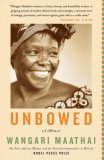Summary | Excerpt | Reading Guide | Reviews | Beyond the Book | Readalikes | Genres & Themes | Author Bio

Critics' Opinion:
Readers' Opinion:
First Published:
Oct 2006, 352 pages
Paperback:
Sep 2007, 352 pages
 Book Reviewed by:
Book Reviewed by:
BookBrowse Review Team
Buy This Book
Gikuyu took them home and each daughter married the man who was the same height as she was, and together they gave rise to the ten clans to which all Kikuyus belong. (Even though the youngest daughter, Wamuyu, did not get married, she did have children.) Each clan is known for a particular trade or quality, such as prophecy, craftsmanship, and medicine. My clan, Anjiru, is associated with leadership. The daughters made the clans matrilineal, but many privileges, such as inheritance and ownership of land, livestock, and perennial crops, were gradually transferred to men. It is not explained how women lost their rights and privileges.
For the Kikuyus, Mount Kenya, known as Kirinyaga, or Place of Brightness, and the second-highest peak in Africa, was a sacred place. Everything good came from it: abundant rains, rivers, streams, clean drinking water. Whether they were praying, burying their dead, or performing sacrifices, Kikuyus faced Mount Kenya, and when they built their houses, they made sure the doors looked toward it. As long as the mountain stood, people believed that God was with them and that they would want for nothing. Clouds that regularly shrouded Mount Kenya were often followed by rain. As long as the rains fell, people had more than enough food for themselves, plentiful livestock, and peace.
Sadly, these beliefs and traditions have now virtually died away. They were dying even as I was born. When European missionaries came to the central highlands at the end of the nineteenth cen- tury, they taught the local people that God did not dwell on Mount Kenya, but rather in heaven, a place above the clouds. The proper place to worship him was in church on Sundays, a concept that was unknown to Kikuyus. Nevertheless, many people accepted the missionaries’ worldview, and within two generations they lost respect for their own beliefs and traditions. The missionaries were followed by traders and administrators who introduced new methods of exploiting our rich natural resources: logging, clear-cutting native forests, establishing plantations of imported trees, hunting wild- life, and undertaking expansive commercial agriculture. Hallowed landscapes lost their sacredness and were exploited as the local people became insensitive to the destruction, accepting it as a sign of progress.
At just over 17,000 feet above sea level Mount Kenya towers over the central highlands. Although it straddles the Equator, it is topped by glaciers year round. Beholding Mount Kenya for Kikuyus and other communities that live around the mountain—Kambas, Merus, and Embus—must have been awe-inspiring. The story goes that the explorers Johan Ludwig Krapf and Johannes Rebmann, upon encountering the mountain in 1849, asked their guide, a member of the Kamba community, who was carrying a gourd, “What do you call that?” Thinking the two Germans were referring to the gourd, he replied, “It’s called kii-nyaa,” pronounced Kenya by the British. This became the name of the mountain and later the country.
Throughout Africa, the Europeans renamed whatever they came across. This created a schism in many Africans’ minds and we are still wrestling with the realities of living in this dual world. At home, we learned the names of mountains, streams, or regions from our parents, but in school we were taught the colonial names, deemed the “proper” names, which we had to use on our exams. The Aberdares, for example, known locally as Nyandarua, or “drying hide,” because of their shape, were named by the British in 1884 after Lord Aberdare, then the head of the Royal Geographical Society.
Naturally, it was many years before I was to understand the complexities of the period. I was born as an old world was passing away. The first Europeans had come to Kenya during the time of my grandparents, in the late 1800s. In 1885, Britain and the other “great powers” of Europe met at the Berlin Conference to formalize what was known as “The Scramble for Africa”—a thirty-year dash to lay claim to the entire continent. With the stroke of a pen on a map they assigned whole regions to the different powers and created completely new nations. In East Africa, Germany received Tanganyika, which later united with Zanzibar to become Tanzania. Britain acquired what became the Kenya colony and the Uganda protectorate. Prior to this superficial partitioning, many communities in Africa had identified themselves as nations, albeit micronations. The resulting countries brought these communities together in arbi- trary ways so that sometimes the new citizens of the post-Berlin nations perceived each other as foreigners. Some micronations found themselves stranded between two neighboring countries. The consequences of these divisions continue to haunt Africa.
Excerpted from Unbowed by Wangari Maathai Copyright © 2006 by Wangari Maathai. Excerpted by permission of Knopf, a division of Random House, Inc. All rights reserved. No part of this excerpt may be reproduced or reprinted without permission in writing from the publisher





The Funeral Cryer by Wenyan Lu
Debut novelist Wenyan Lu brings us this witty yet profound story about one woman's midlife reawakening in contemporary rural China.
Your guide toexceptional books
BookBrowse seeks out and recommends the best in contemporary fiction and nonfiction—books that not only engage and entertain but also deepen our understanding of ourselves and the world around us.